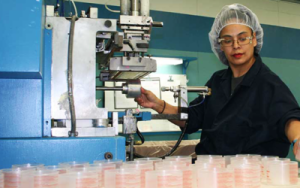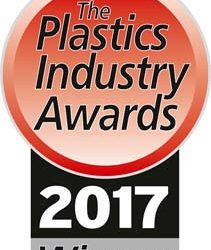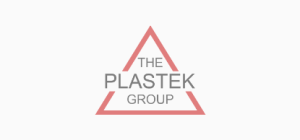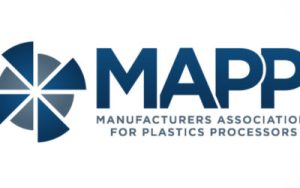In packaging, PET refers to polyethylene terephthalate, a widely diffused polymer. Thanks to its versatility and recyclability, the packaging industry often uses it to manufacture packaging for personal care products, household products, and food containers. Understanding the material characteristics of this packaging and how it is manufactured can help you find more uses for it for your operations.
The Material Characteristics of PET
PET’s material characteristics make it suitable for a wide range of products, keeping items safe and hygienic while offering product visibility.
- Physical Properties: PET is durable and robust and features impact resistance. It will not shatter, making it a good glass replacement in certain applications. It is also lightweight and exhibits excellent transparency.
- Chemical Properties: This material has good chemical resistance and maintains its integrity when exposed to specific elements like chemicals, ultraviolet rays, and alkalis. PET also exhibits suitable barrier properties against moisture, carbon dioxide, and oxygen, which is especially helpful when preserving packaged goods.
- Optical Properties: PET can have a glossy appearance that enhances the packaging’s visual appeal. It also offers high clarity, allowing customers to see the products in the packaging. This feature is particularly valuable for food products.
How the PET Packaging Manufacturing Process Works
The PET packaging manufacturing process involves several steps to result in durable, high-quality packaging options. Here is a general overview of the PET packaging production process:
Raw Material Selection
The manufacturing process starts with raw petroleum-based materials. These materials include either dimethyl terephthalate or terephthalic acid and ethylene glycol, which are combined. Ethylene glycol is a colorless, odorless liquid that helps facilitate the polymerization process. Terephthalic acid and dimethyl terephthalate play a role in forming the polymer chains during the polymerization process.
Polymerization
Next comes a chemical process called polymerization. The raw materials are combined under specific pressure conditions and temperatures with catalysts present. The chemical reaction produces PET polymer chains.
The PET polymer pellets or granules then run through a melt extrusion process. The molten PET ejects through a die, forming long strands that solidify as they cool. The solidified strands are cut into chips or smaller pellets for further processing.
Packaging Formation
The PET pellets are molded or shaped once they’re reheated using one of two methods:
- Injection Molding: Involves injecting molten plastic into a mold under high pressure to produce intricate, high-precision parts, making it ideal for mass production of smaller items like automotive components. with generally lower initial tooling costs.
- Thermoforming: Utilizes a heated PET plastic sheet formed over a mold, making it more suitable for producing larger and simpler shapes, such as packaging materials and trays.
The choice between the two methods depends on factors like part complexity, production volume, and cost considerations.
All PET packaging then undergoes quality checks. These checks look for factors like clarity, dimensional accuracy, strength, and other specifications.
Top Applications of PET Packaging
The material characteristics of PET packaging, like durability, chemical resistance, and transparency, make it versatile enough to be used in various applications. This versatility gives manufacturers practical, cost-effective solutions to package their products.
Food and Beverage Products
PET’s properties make it a popular packaging material in the food and beverage industry. It is often used to produce bottles for carbonated drinks, water, salad dressing, condiments, and other similar products, ensuring they stay contained in handling and transportation. PET’s chemical inertness also helps to maintain the taste of food items.
Caps and closures are often made from PET materials due to their lightweight nature, simplicity in molding, and recyclability. These closures create a tight seal to help preserve food’s freshness.
Personal Care and Pharmaceutical Products
This packaging material is used to make bottles for shampoo, conditioner, body wash, lotions, skin care, and certain cosmetics. Its chemical resistance, durability, and inertness help to contain these products. In the pharmaceutical industry, PET-based medicine bottles store vitamins, medication, and supplements.
Other Uses
Manufacturers can transform PET into synthetic fibers for clothing, upholstery, and accessories. Blankets, carpets, sportswear, and clothing can be made from PET. Household cleaners, pesticides, detergents, and lubricants may also be packaged in PET-molded materials.
The robust characteristic of this material allows it to function in industrial and technical applications, too. It can produce electrical insulators, industrial strapping, and protective film. Its strength-weight ratio is also beneficial in manufacturing construction materials, engineering components, and automotive parts.
Advantages of PET Packaging
This material’s versatile advantages can cater to various products. PET can be shaped into diverse forms, making it an appealing choice in manufacturing.
- Colorless Appearance: Its ability to be transparent or translucent lets consumers see package content before they buy, which can help increase brand trust.
- Lightweight Construction: A 1-liter PET bottle weighs just 25 grams, or under 1 ounce. This low weight range means transportation costs for this material are also relatively low.
- Durability: This thermoplastic is robust and stretchable during processing, facilitating easy molding and offering product protection during transportation, handling, and storage.
- Barrier Properties: PET has excellent barrier properties against moisture and CO2, which is helpful for soda bottles.
PET Packaging’s Environmental Impact and Sustainability
PET packaging has a mixed environmental impact with promising sustainability features. Most notably, PET is a fully recyclable plastic. It’s versatile enough to be remade into various shapes, with the possibility of repeating that cycle indefinitely.
Polyethylene terephthalate plastic is one of the most recycled plastics in the world and is reprocessed into different items, from new recycled PET packaging to textiles. PET packaging recycling reduces waste, helps conserve resources, and decreases greenhouse gas emissions.
At The Plastek Group, we take environmentalism seriously, prioritizing various sustainable efforts to conserve resources and reduce emissions, and our manufacturing of plastic packaging is a significant part of that prioritization.
Get Custom PET Molds for Your Products From The Plastek Group
Polyethylene terephthalate plastic is lightweight, recyclable, and food-safe. This material’s versatility, durability, and promising sustainable features solidify its good standing with manufacturers worldwide, serving as a go-to packaging option for numerous applications in various industries.
The Plastek Group is a trusted plastic packaging manufacturer with extensive experience supplying solutions for numerous markets, from the personal care industry to the food and beverage industry. We supply many of the world’s top companies with custom product design, tool building and other comprehensive services and solutions.
Our knowledgeable team can help you create and design the most suitable and effective packaging for your products. For specific project needs, request a quote or call us at 814-876-1294. We have locations in the United States, Mexico, Brazil and the United Kingdom that are ready to serve you.







